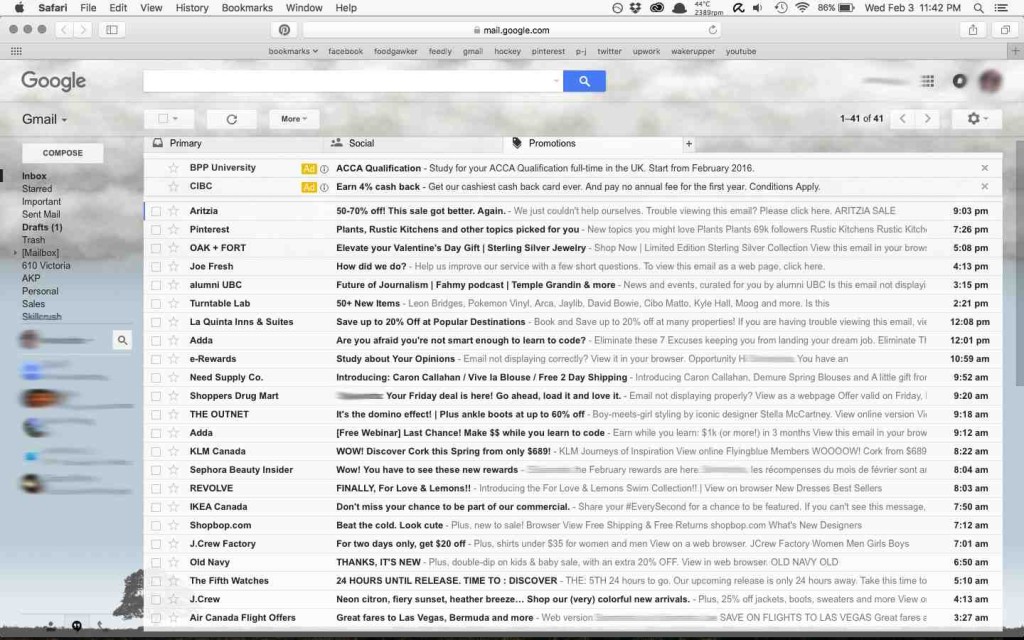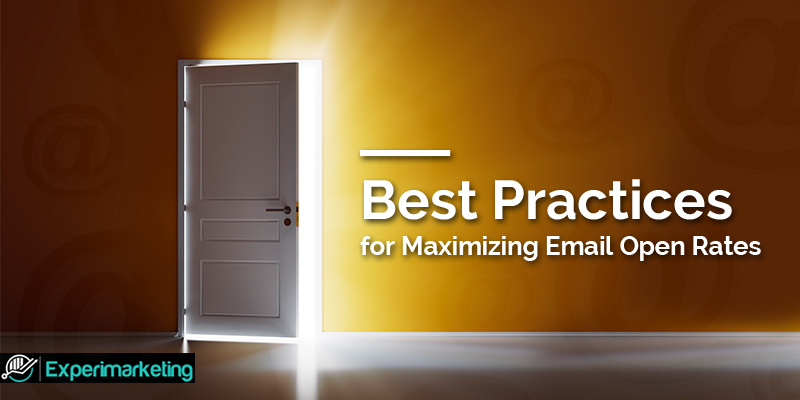As the importance of engaging your audience grows, email is one of the best ways to communicate with them. Why? Some of the reasons are:
- You can directly contact your audience
- You can combine graphics and text for more attractive messages and use longer copy if needed
- You can personalize messages for your recipients
As the importance of engagement grows, so do the number of companies that use email to get to their audience.

Your audience’s inbox probably looks something like this. Any company that your customers have interacted with digitally is likely to contact them regularly. It doesn’t matter if it’s a hotel chain that they’ve only stayed at once, or an e-commerce store that they buy from with some regularity.
On any given day, someone could receive tens of emails. Gmail has a Promotions folder that automatically collects subscriptions like these, but even keeping them out of the main inbox doesn’t stop them from being overwhelming.
How can you stand out and get your emails read?
One quick tip before we start: before you begin building your distribution list, make sure that you have obtained the email addresses appropriately. With legislation targeting emails, such as CAN-SPAM, improper conduct can lead to penalties.
1. Make a schedule
Plan your emails accordingly. If you’re sending emails every day, make sure that you’re not sending the same message repeatedly — your audience will end up just tuning you out.
Creating a schedule also gives you plenty of opportunities to develop content and engage differently with your audience. Some different styles of email you might want to try include:
- A feature on somebody at the company
- An invite to see other content you’ve produced (e.g. a behind-the-scenes blog post)
- A co-branding promotion with another business that fits your audience
2. Make sure the “from” name is recognizable.
With most email interfaces, the sender’s email address or domain isn’t immediately seen or recognized. Sending emails from what could be a person looks more personal, but if the recipient doesn’t recognize the name with the subject line, your email could end up in the trash, unopened.
There are some options, however, if you want to change your sender name without losing name recognition:
- Writing the name and company, e.g., Jane from Experimarketing.
- Using your domain as the name of the sender, e.g., Experimarketing.com
- Sending from a collaborative sounding sender, e.g. The Experimarketing Team
3. Start off with an effective subject line.
As seen above, subject lines stacked on top of one another can give the impression of one large block of text. Mobile email interfaces aren’t much better. How can you stand out from the others?
- Personalize the email, e.g., starting off with “Hi [name of recipient] — see what’s in store for you!”
- Create a sense of urgency, e.g., “48 Hours Only.”
- Keep it short, ideally no longer than 50 characters. Any longer and it could be cut off.
- Create a sense of conversation, e.g., “Where’s your next vacation?
4. Use responsive design
Once your audience starts opening your emails, how do you make sure they keep doing so? Using responsive design is a great way to start. In a recent study on smartphone use, 88% of people used their phone for an email function at least once.
If your email isn’t loading properly on certain devices, your audience base may become apathetic and start deleting your emails without even bothering to see what you’re trying to tell them. Why would they keep trying if they repeatedly can’t read your emails?
5. Use analytics
Another way to keep your open rates high is to test and analyze to see what your audience is doing. Using experiments and analytics can provide valuable data and help you know what your audience values from your emails.
For example, many email newsletter tools have the ability to run an A/B test. You can send the same email with two different subject lines to different members of your audience. This would be an opportunity to test a subject line to see which variation yields a higher open rate and/or increased engagement.
You may also want to keep track of other statistics, including retention rate and engagement-to-delivery ratio. The retention rate will help you see if what you’re doing is bringing people in or driving them away, and the engagement-to-delivery ratio can help indicate how many people are actually taking action on your email content.
6. Deliver value
Above all, make sure your emails are giving the audience a reason to keep opening them to see what you have in store for them next. It doesn’t always have to be a markdown on last season’s product, or a free white paper for download, but being able to consistently deliver value goes a long way towards developing a relationship.
Your email subscriber base is probably one of the largest channels of audience engagement and interaction.
Take the time and utilize it as a way to bring your readers closer to your company; for example, by using email to make readers aware of other communication outlets you’re using, like social media. Give them a reason to be with you on that channel as well, and you’ll be able to deepen the connection between you and your audience.
